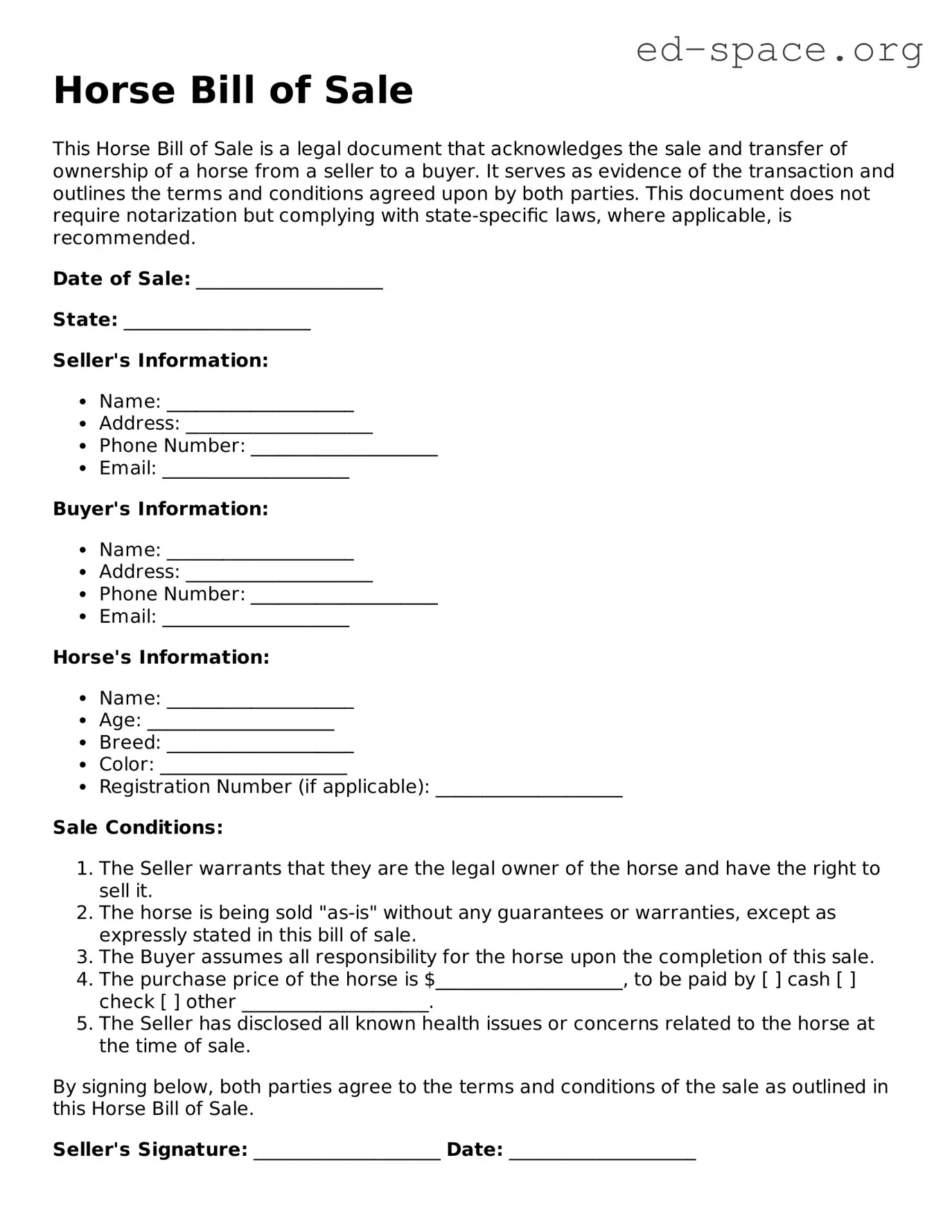What is a Horse Bill of Sale?
A Horse Bill of Sale is a legal document that records the transfer of ownership of a horse from one person to another. It outlines the details of the transaction, including information about the horse, the seller, the buyer, and the terms of the sale. This document serves as proof of purchase and can be used for registration, insurance, and other legal purposes.
Why do I need a Horse Bill of Sale?
Having a Horse Bill of Sale is crucial for several reasons. It legally protects both the buyer and the seller in the event of disputes, clarifying the terms of the sale and the ownership history of the horse. It is also essential for record-keeping purposes and can be required by insurers, registries, or when transferring the horse to a new owner in the future.
What information should be included in a Horse Bill of Sale?
A comprehensive Horse Bill of Sale should include the full names and addresses of both the buyer and the seller, a detailed description of the horse (including breed, color, age, sex, and any identifying marks or registration numbers), the sale date, the purchase price, and payment terms. It may also cover warranties or representations made by the seller, such as the horse's health and soundness at the time of sale.
Is a witness or notarization required for a Horse Bill of Sale?
The requirements can vary depending on the state. While not all states require a witness or notarization, having the document notarized or witnessed can add an extra layer of legal protection and validity to the transaction, making it harder to contest in the future.
Can I create a Horse Bill of Sale myself?
Yes, you can create a Horse Bill of Sale yourself as long as it contains all the necessary information about the transaction and the parties involved. It's essential to ensure that the document is clear, accurate, and thorough to avoid any future disputes or legal issues.
What is the difference between a Horse Bill of Sale and a receipt?
While both a Horse Bill of Sale and a receipt document the sale of the horse, a Horse Bill of Sale is more detailed and legally binding. It includes comprehensive information about the horse, the buyer, the seller, and the terms of the sale, unlike a receipt which typically only notes the purchase price and the date of sale.
Do I need a lawyer to draft a Horse Bill of Sale?
While you don't necessarily need a lawyer to draft a Horse Bill of Sale, consulting with one can ensure that all legal bases are covered. A lawyer can advise on any state-specific requirements and help tailor the document to your specific needs, offering peace of mind to both parties involved in the sale.
What happens if there's a dispute after the sale?
If there's a dispute after the sale, the Horse Bill of Sale serves as a key piece of evidence in any legal proceedings, detailing what was agreed upon by both parties. It can help resolve disputes about the terms of the sale or the horse's condition at the time of purchase. However, seeking legal advice to address disputes is always recommended.
How do I know if the Horse Bill of Sale is legally binding?
A Horse Bill of Sale is legally binding if it includes all necessary details of the transaction, is signed by both parties, and adheres to the laws of the state where the sale takes place. Ensuring it is correctly executed, with or without a witness or notarization, further validates its legality and enforceability.
